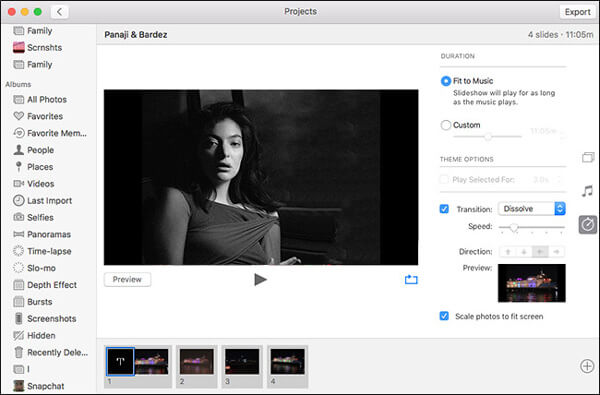

To remove a label, click on the label's green triangle on the timeline (it will get red) and press "L". If you missed a beat, just click anywhere on the timeline and press "L". So let there enough time between labels (about 3 seconds). It will create a label, a green triangle on the timeline, which will be used as a transition point between two images. Don't look at your images, just listen to the music and when you detect a beat, press "L" key on your keyboard (lowercase). Go to the start of your video (Home key) and play it (Spacebar). Don't pay any attention to the duration of images for now. You can scale the timeline using "Shift + mouse wheel". Just drag any image on the timeline with your mouse and drop it between other two images. Turn off keyframing and set drag-and-drop editing.Now you should see your pictures in track "Video 1" and your music in "Audio 1" andl "Audio 2" (because it is stereo). Then repeat this step for your music file.

At the bottom of the file selection dialog, set the "Insertion strategy" to "Concatenate to existing tracks". Go into the directory images/1280x720 and select all your images (using Shift key). Run Cinelerra, in the main window's menu select "File -> New" and set the "Audio tracks: 2", "Audio channels: 2", "Frame rate: 30", "Width: 1280", "Height: 720" and click "OK". To work with images in Cinelerra, it is better to scale them to the final resolution of the video: Copy the pictures you want to use into the images directory and the background music into the sound directory. Now create directories images, images/1280x720, sound. Now we will create a slideshow in 1280x720 resolution. There are some default values, so you don't have to make any changes there. There are comments, so you should be able to set them properly. If you open the scripts cinelerra_transitions_on_ and cinelerra_transitions_on_labels_, you will find few configuration variables at the beginning. So let's use "X11" or "X11-XV" until we really need the OpenGL (which will become handy after we add pan-and-zoom effect and fading between images, but let's start with "X11").Įdit: The default length of inserted images in Cinelerra is set to 1 frame, so to change that, go to "Settings -> Preferences -> Recording -> Images" and check "Import images with a duration of" and set "3.0000" seconds besides that. If your graphic card supports OpenGL, you can select "X11-OpenGL", but I experienced few crashes most probably because of this driver. Then in the "Video Out" section, there is a "Video Driver" drop-down menu. Run Cinelerra, in the main window select "Settings -> Preferences", select "Playback" tab and in "Audio Out" section, set the "Playback buffer size" to the lowest possible value (in my case 2048).

Cinelerra (, nice tutorials on Cinelerra are here: ).After reading this tutorial, you will hopefully change your mind :o) If you ever tried to create a photo slideshow where the transitions between photos are synchronized with some background music, you probably found out, that it is quite difficult.


 0 kommentar(er)
0 kommentar(er)
